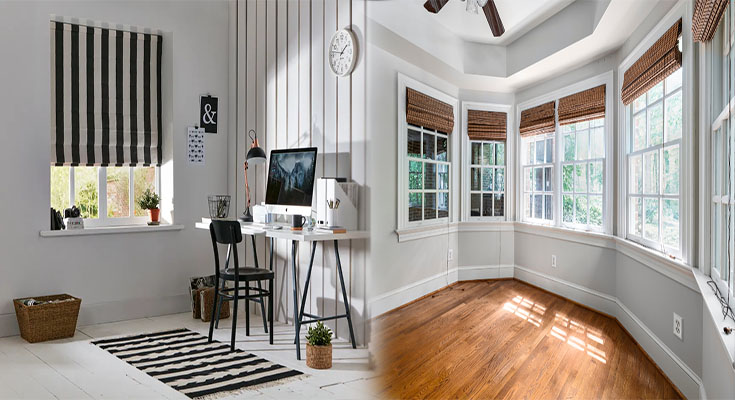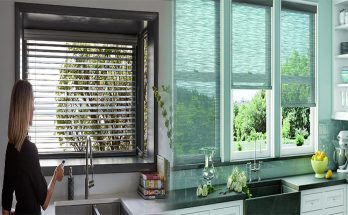Creating a sustainable and eco-friendly home is an essential step towards reducing our environmental impact. When it comes to window treatments, there are a plethora of options available that combine style and sustainability. By incorporating eco-friendly window treatments into your modern home, you can enhance the aesthetic appeal of your space while reducing energy consumption and supporting a greener lifestyle. In this article, we will explore a range of sustainable window treatment ideas that will elevate your home’s design while minimizing your carbon footprint.
Organic Cotton Curtains: Natural Beauty with Minimal Environmental Impact
Organic cotton curtains are a fantastic choice for those seeking sustainable window treatments. They are made from cotton grown without the use of harmful pesticides or synthetic fertilizers, reducing the environmental impact of the fabric. Choose curtains dyed with natural, non-toxic dyes to further enhance their eco-friendliness. Organic cotton curtains offer a soft and natural look, allowing the right amount of light to filter into your space while providing privacy and insulation.
Bamboo Blinds: Elegant, Renewable, and Durable
Bamboo blinds are an excellent eco-friendly alternative to traditional blinds. Bamboo is a rapidly renewable resource, meaning it grows quickly and can be sustainably harvested. These blinds are lightweight, durable, and add a touch of natural elegance to any room. Bamboo blinds provide excellent light control and privacy, making them ideal for bedrooms, living rooms, or offices. Additionally, their insulating properties can help regulate temperature, reducing the need for excess heating or cooling.
Linen Roman Shades: Timeless Style and Sustainable Luxury
Linen is renowned for its luxurious texture and timeless appeal. Opting for linen Roman shades as your window treatments adds an element of sophistication and sustainability to your modern home. Linen is derived from the flax plant, which requires less water and fewer pesticides compared to other crops. Roman shades made from linen offer privacy, light control, and insulation. The natural fibers of linen create a unique texture that adds depth and character to any space.
Solar Reflective Window Film: Energy Efficiency and UV Protection
Solar reflective window film is an eco-friendly solution that can be applied to existing windows. This film helps regulate indoor temperatures by reducing heat gain in the summer and heat loss in the winter. By reducing the need for excessive air conditioning or heating, solar reflective window film can significantly lower energy consumption. Additionally, it provides UV protection, blocking harmful rays that can fade furniture and flooring. This sustainable window treatment idea is a cost-effective way to improve energy efficiency and comfort in your home.
Vintage Upcycled Curtains: Sustainable Style with a Unique Twist
Give your windows a sustainable and stylish makeover by upcycling vintage curtains. Visit thrift stores or search online for unique, second-hand curtains that you can repurpose and redesign to fit your modern home’s aesthetic. Upcycling not only reduces waste but also adds a touch of creativity and personality to your space. With a bit of sewing and DIY skills, you can transform vintage curtains into custom window treatments that are eco-friendly and truly one-of-a-kind.
Selecting sustainable and eco-friendly window treatments for your modern home not only enhances its aesthetic appeal but also allows you to embrace a greener and more environmentally conscious lifestyle. From organic cotton curtains to bamboo blinds, linen Roman shades, solar reflective window film, and upcycled vintage curtains, there are plenty of options available to suit your style and sustainable preferences. By choosing these eco-friendly window treatments, you contribute to reducing energy consumption, promoting renewable resources, and minimizing waste. Embrace the beauty of sustainable design and create a harmonious living space that aligns with your values, all while enjoying the benefits of energy efficiency and a reduced carbon footprint.





